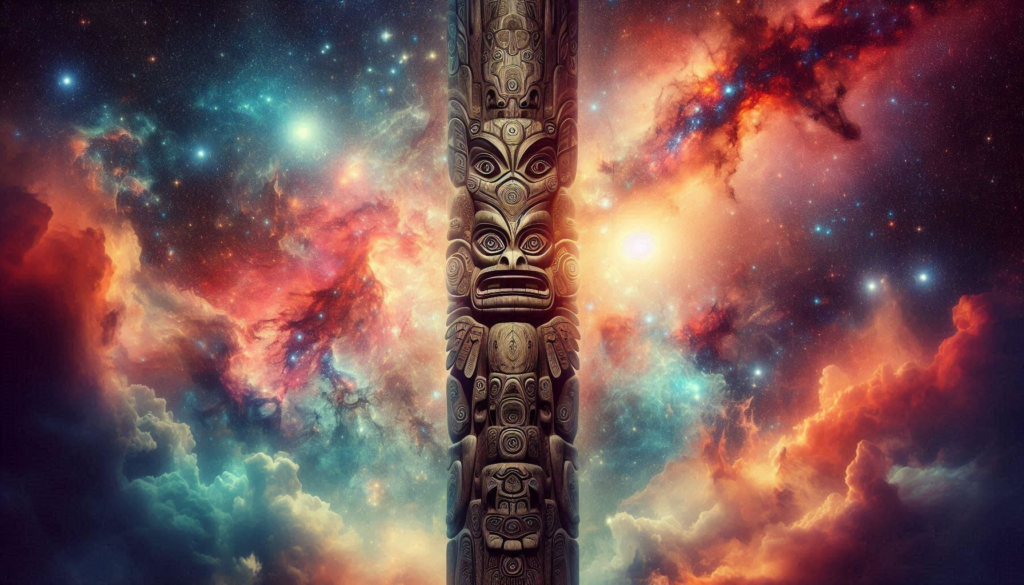Understanding Dream Meanings
The Role of Dreams in Indigenous Cultures
In many Indigenous cultures, dreams play a vital role in the spiritual and personal growth of individuals. In Aborigine cultures, for instance, dreams are believed to hold significant meaning and are often used as a means of guidance and communication with the spirit world.
The concept of dreamtime, or alcheringa, is central to Aboriginal mythology and is seen as a time when the laws and traditions that govern human behavior were established. It is believed that during this period, the ancestral beings created the landscape and all living things, and that their actions continue to shape the world we live in today.
Dreams are often used by Aborigines as a means of accessing information about their past, present, and future. They believe that dreams can provide insight into the workings of the spirit world and help individuals navigate challenging situations or make important decisions. Dream interpretation is an essential part of Aboriginal culture, with different dreaming stories and symbols holding varying levels of meaning depending on the individual’s personal experiences and relationships.
During times of spiritual growth and transformation, Aborigines often have intense and vivid dreams that are believed to hold special significance. These dreams may provide a vision or message from the spirit world, offering guidance and support during periods of change or transition. The act of dreaming is seen as a powerful tool for personal growth and development, allowing individuals to tap into their inner wisdom and connect with the natural world.
For Aborigines, dreams are not simply a product of the mind; they are believed to be a window into another realm of reality. They see dreams as a means of communicating with the spirit world and accessing ancient knowledge and traditions that have been passed down through generations. This deep respect for the power of dreams is a fundamental aspect of Aboriginal culture, reflecting their profound connection to the land, their ancestors, and the natural world.
In summary, dreamtime plays a vital role in Aborigine cultures as a time of spiritual growth and transformation. Dreams are seen as a means of accessing information about the past, present, and future, providing guidance and support during times of change or transition. Through dreams, individuals can tap into their inner wisdom, connect with the natural world, and access ancient knowledge and traditions that have been passed down through generations.
The Aboriginal people have long believed that dreams are a source of spiritual guidance and connection to the ancestors.
Aborigine Dreaming as Spiritual Growth
Connection to Nature and Ancestors
The connection to nature and ancestors is deeply rooted in the Aboriginal culture, where it is believed that every living being is connected and part of a larger web of life. This spiritual relationship is based on the Dreamtime, also known as the Dreaming, which is a complex network of ancestral beings and events that shaped the world.
The Dreaming is a concept that transcends time and space, where ancestors are believed to have created the land, laws, and customs of the Aboriginal people through their actions. It is a shared experience among all Aboriginal communities, and it continues to play a vital role in modern Australian society.
Connection to nature and ancestors in the Aboriginal culture is not just about reverence for the physical world but also about recognizing the spiritual essence that underlies all things. This connection is built on three pillars: law, custom, and ceremony. These interconnected aspects provide a holistic approach to understanding the complex relationships between humans and their environment.
Law refers to the rules of behavior and ethics that govern Aboriginal society, which are derived from the Dreaming. Custom encompasses the cultural practices and traditions that have been passed down through generations, including language, art, music, dance, and storytelling. Ceremony is a time for spiritual rejuvenation and renewal, often performed during special events such as births, initiations, and funerals.
The connection to nature and ancestors has significant implications for mental health, well-being, and environmental conservation in Indigenous communities. Studies have shown that the traditional practices of Aboriginal people are closely tied to their physical and emotional health, as well as their connection to their land and culture.

Key Aspects of Connection to Nature and Ancestors
- The Dreaming: A complex network of ancestral beings and events that shaped the world. It is a shared experience among all Aboriginal communities.
- Connection to nature and ancestors in the Aboriginal culture recognizes the spiritual essence that underlies all things, not just reverence for the physical world.
- The three interconnected pillars: law (rules of behavior), custom (cultural practices), and ceremony (spiritual renewal).
- Connection to nature and ancestors has significant implications for mental health, well-being, and environmental conservation in Indigenous communities.
Benefits of Connection to Nature and Ancestors
- Mental Health: Traditional practices are closely tied to physical and emotional health.
- Well-being: Connection to nature and ancestors promotes overall well-being and life satisfaction.
- Environmental Conservation: Indigenous people have a unique understanding of the importance of preserving their land and culture for future generations.
- Cultural Revitalization: Connection to nature and ancestors helps to revitalize and strengthen Indigenous cultures and languages.
Conclusion
The connection to nature and ancestors is a vital aspect of Aboriginal culture, where the spiritual relationship between humans and their environment is deeply rooted in the Dreaming. By acknowledging and respecting this connection, we can gain a better understanding of the complex relationships between humans and their environment, promoting mental health, well-being, and environmental conservation.
In Aboriginal culture, dreaming is about connecting with nature and honoring the ancestors who came before.
In Aboriginal culture, dreaming plays a vital role in connecting individuals with nature and honoring the ancestors who came before. This concept is deeply rooted in their spiritual beliefs and practices.
The Dreaming, also known as “The Dreamtime,” refers to the period of creation when ancestral beings roamed the earth, shaping the land, sea, and sky with their actions. These ancestral beings were not just mythological figures but were considered real entities that had a direct impact on the natural world.
Aboriginal people believe that every living thing, including animals, plants, and even rocks, has a spirit that is connected to the Dreaming. By honoring these spirits, individuals can build strong relationships with nature and their ancestors, which is essential for spiritual growth and well-being.
The concept of dreaming in Aboriginal culture is not just about sleeping or having visions but is an integral part of their daily lives. It involves being aware of one’s surroundings, listening to the stories of the land, and respecting the interconnectedness of all living things.
For example, when walking through the bush, an Aboriginal person might stop to listen to a bird singing or pay respects to a particular tree or rock. This act of attention is considered a form of dreaming, as it allows them to connect with the natural world and honor their ancestors who lived on this land for generations.
In this way, dreaming becomes a means of spiritual growth, where individuals can develop a deeper understanding of themselves, their place in the world, and their responsibilities towards nature. By embracing the Dreaming, Aboriginal people cultivate a sense of respect, reciprocity, and interconnectedness that is essential for living in harmony with the land and each other.
The Dreaming is not just a part of Aboriginal culture but also provides a rich source of knowledge, wisdom, and inspiration for their art, music, dance, and storytelling. By preserving and passing on these traditions, Aboriginal people can continue to honor their ancestors and connect with nature, ensuring the continuation of their cultural heritage for generations to come.
The Importance of Dreamtime in Indigenous Spirituality
In the Indigenous cultures of Australia, particularly among the Aboriginal people, the concept of Dreamtime (also known as “The Dreaming”) plays a vital role in their spirituality. It is an integral part of their rich and vibrant culture, which has been passed down through generations.
The Dreamtime is believed to be the time when the world was created by ancestral beings, who traveled across the land, creating animals, plants, and natural features as they went. These ancestral beings are said to still exist in the present day, influencing the lives of Aboriginal people and connecting them with their culture and traditions.
At its core, the Dreamtime is a spiritual journey that provides a framework for understanding the world around us. It explains the interconnectedness of all living things and the importance of respecting and caring for the land, which is considered sacred.
The Aboriginal people believe that everything in life has a spirit, including animals, plants, rocks, waterways, and even human beings. Each spirit has its own unique characteristics and properties, which are understood through stories and songs passed down through generations.
Dreamtime is also closely tied to the concept of “Songlines,” which refer to the pathways that ancestral beings created as they traveled across the land. These Songlines are believed to hold the power of creation and are used by Aboriginal people for guidance, healing, and spiritual growth.
In Dreamtime, individuals embark on a spiritual journey of self-discovery, where they can explore their personal struggles, desires, and motivations. Through meditation, storytelling, and connection with nature, they seek to understand their place within the world and the interconnectedness of all living things.
This process of spiritual growth is crucial in Indigenous spirituality, as it allows individuals to develop a deeper understanding of themselves and their relationship with the natural world. By engaging with the Dreamtime, Aboriginal people are able to transcend the present moment and connect with something greater than themselves.
The importance of Dreamtime cannot be overstated, as it provides a framework for understanding the complexities of life and our place within the universe. It encourages individuals to live in harmony with nature, respect the traditions of their ancestors, and cultivate a deeper sense of spirituality and connection with all living things.
In conclusion, the Dreamtime is an integral part of Indigenous spirituality, providing a rich framework for understanding the world around us. It encourages spiritual growth, self-discovery, and a deeper connection with nature and our place within it.
Dreamtime is a time when the spiritual and physical worlds intersect, allowing for growth and transformation.
The concept of Dreamtime in Aboriginal Australian culture is deeply rooted in their spiritual beliefs, encompassing a time when the spiritual and physical worlds intersect. This convergence allows for profound growth and transformation to occur.
This phenomenon is known as the ‘Dreaming’, which refers to a complex network of interconnected stories, songs, dances, and rituals that have been passed down through generations of Aboriginal people. These stories are not just mere myths but hold significant spiritual meaning, often explaining the creation of the world, the laws governing human behavior, and the connection between all living things.
At the heart of Dreamtime lies a profound understanding of the interconnectedness of all existence, emphasizing the intricate web that binds humans, animals, plants, land, and water. This holistic worldview acknowledges that everything is intertwined and that every action has consequences on the delicate balance of the world around us.
The ‘Dreaming’ is not just a spiritual concept but also deeply connected to the physical environment, with many Aboriginal stories centering around geographical features, such as rivers, mountains, and deserts. These stories are believed to hold within them powerful energies that can guide humans toward balance, harmony, and growth.
During Dreamtime, individuals undergo significant personal transformations, often involving intense spiritual practices that help them connect with their ancestors and the land. This journey allows for a deep understanding of one’s place within the larger web of life, fostering empathy, compassion, and a sense of responsibility towards all living beings.
The outcomes of this transformative process include a profound appreciation for the interconnectedness of everything and a deeper respect for the natural world. By embracing Dreamtime principles, individuals can cultivate a more balanced existence that honors both the spiritual and physical realms, promoting growth, harmony, and peace within themselves and their communities.
Dream Meanings as Guidance
Interpreting Dreams in Aborigine Culture
In the rich cultural heritage of the Aboriginal people, dreams hold a sacred significance as they are believed to be a window into the spiritual realm. The Dreaming, also known as The Dreamtime, is a complex and multifaceted concept that underlies every aspect of their lives.
The Aborigine’s understanding of dreams is deeply rooted in their spiritual practices, which revolve around the belief in a vast network of ancestral beings who created the world and all its wonders. According to their mythology, these ancestors still inhabit the land, guiding their descendants through various realms of existence, including the spirit realm.
In this context, dreams are considered an opportunity for individuals to connect with the spiritual world, tap into the collective unconscious, and access knowledge that is not yet accessible in waking life. It is a time when the boundaries between the physical and spiritual worlds are at their most permeable.
When interpreting Aborigine dreams, one must take into account the cultural context, the role of the dreamer within their family and community, as well as the symbolic language of the Dreaming. This language is often encoded in subtle details that require a deep understanding of Aboriginal mythology and symbolism.
The Aborigine’s concept of time is also crucial to grasping the meaning behind their dreams. Time for them is not linear but cyclical, with events occurring simultaneously across multiple dimensions. This non-linear perception of time allows them to transcend the limitations of space and access various realms through their dreams.
A dream in Aborigine culture can be seen as a journey through different worlds, with each world representing a distinct level of consciousness or realm of existence. By navigating these worlds, individuals can acquire wisdom, knowledge, and insight into their place within the broader cosmos.
Moreover, the Aborigine’s understanding of dreams often involves the collective unconscious, which is believed to contain the shared archetypes and memories of all human beings. Through their dreams, they tap into this collective reservoir, accessing universal knowledge and insights that transcend individual experiences.
In summary, interpreting Aborigine dreams requires a deep understanding of their cultural context, spiritual practices, and symbolism. It is an art that demands respect for the traditional wisdom of their elders and a willingness to engage with the mystical dimensions of their reality. As such, it remains a powerful tool for personal growth, self-discovery, and spiritual transformation.
By embracing this rich cultural heritage, we can gain a deeper appreciation for the complexities of Aborigine spirituality and the profound wisdom that lies within their dreams. Through their dreamwork, they remind us that our individual experiences are but a small part of a greater web of existence, one that is connected to all living beings across space and time.
Ultimately, the art of interpreting Aborigine dreams is an ongoing journey into the very heart of human consciousness, where we can discover new depths within ourselves and tap into the boundless wisdom of the collective unconscious.
Aboriginal people believe that dreams are messages from the ancestors, guiding individuals on their life’s path.
In many Indigenous Australian cultures, dreams are considered a vital source of guidance and wisdom. Aboriginal people believe that dreams are messages from the ancestors, guiding individuals on their life’s path. This belief is deeply rooted in their spiritual traditions and plays a significant role in their daily lives.
The idea that dreams can provide insights into an individual’s future is based on the understanding that the spirits of the ancestors reside within the dreamtime, a complex network of interconnected stories, songs, dances, and ceremonies. These spirits are believed to possess knowledge about the past, present, and future, which they share with individuals through their dreams.
For Aboriginal people, dreaming is not just a passive experience but an active process that requires interpretation. They believe that each dream has its own unique meaning, depending on the context, symbols, and emotions experienced during the dream. To understand the message of the dream, individuals may seek the advice of Elders or other knowledgeable community members.
The interpretation of dreams is often linked to an individual’s life stage and personal circumstances. For example, a young person may have dreams that signal important life transitions, such as moving from childhood to adulthood. Similarly, elderly individuals may have dreams that foretell their passing or guide them through the final stages of their life.
Aboriginal Dreaming also emphasizes the importance of respect, reciprocity, and responsibility towards the land, ancestors, and other living beings. Dreams can provide valuable insights into an individual’s relationship with these interconnected entities and encourage personal growth, healing, and balance within the community.
In practical terms, Aboriginal people may use dreams as a source of inspiration for various activities, such as art, music, or storytelling. For example, a young artist might have a dream that guides them in creating a particular painting or sculpture. Similarly, musicians may draw on their dreams for song ideas or themes.
Furthermore, the role of women in Aboriginal Dreaming is particularly significant, as they are often believed to be custodians of spiritual knowledge and holders of ancestral stories. Women’s dreaming may focus on aspects such as birth, fertility, and nurturing, while men’s dreaming may concentrate on hunting, warfare, and ceremonial activities.
In summary, the concept of Aboriginal Dream Meaning is a complex and multifaceted aspect of Indigenous Australian spirituality. It emphasizes the interconnectedness between individuals, ancestors, land, and other living beings, guiding individuals towards personal growth, healing, balance, and respect for their environment.
The Role of Elders in Dream Interpretation
In many Aboriginal cultures, elders play a significant role in interpreting dreams and sharing their meanings with the community. Elders are revered for their wisdom, life experience, and spiritual understanding, making them the most trusted advisors when it comes to deciphering the symbolism and messages contained within dreams.
The concept of dream interpretation is deeply ingrained in Aboriginal culture, where dreams are believed to be a source of guidance, healing, and spiritual growth. Elders use their knowledge of traditional stories, mythology, and ancestral lore to understand the hidden meaning behind a dream, which is often rooted in the physical and emotional experiences of the individual.
When an Aboriginal person shares a dream with an elder, they are seeking more than just a literal interpretation – they are asking for spiritual guidance on how to navigate their waking life. The elder’s role is not only to decipher the symbols and themes present in the dream but also to connect them to the broader context of the individual’s life story, highlighting areas that require healing, transformation, or self-reflection.
Elders are skilled at recognizing recurring patterns and motifs in dreams, which often relate to unresolved issues, unexpressed emotions, or untapped potential. By acknowledging these patterns, elders help individuals identify areas where they need to focus their attention, make amends, or seek new opportunities for growth.
The dream interpretation process typically involves a combination of active listening, intuitive insight, and storytelling. Elders may ask questions to clarify the dreamer’s experience and gather additional information about their life circumstances. They might also draw upon their own knowledge of mythology, ancestral stories, and traditional practices to contextualize the dream and offer guidance.
One key aspect of Aboriginal dream interpretation is its emphasis on personal responsibility and agency. Elders do not simply provide answers or solutions; instead, they empower individuals to take ownership of their own healing journey and spiritual growth. By acknowledging the complexities and nuances of human experience, elders encourage dreamers to explore their own inner wisdom and tap into their creative potential.
In this way, Aboriginal dream interpretation serves as a powerful tool for personal transformation and community building. Elders play a vital role in facilitating this process by offering a safe, supportive space for individuals to share their dreams and receive guidance on how to integrate their spiritual experiences into their waking lives.
Elders play a crucial role in interpreting dreams, helping individuals understand their spiritual growth and purpose.
In many Indigenous cultures, including the Aboriginal Australians, elders play a significant role in interpreting dreams and guiding individuals towards understanding their spiritual growth and purpose.
The significance of dreaming in these cultures lies in its connection to the Dreamtime, also known as the Dreaming or the Rainbow Serpent. The Dreamtime is the period when the world was created by ancestral beings who traveled across the land, creating animals, plants, and natural features.
During this time, the ancestral beings performed various acts that shaped the environment, laws, and customs of the Indigenous people. As a result, dreams are believed to be a direct link between an individual’s spiritual realm and their physical reality.
Elders serve as dream interpreters by drawing upon their knowledge of the Dreamtime stories, rituals, and traditions. They use this understanding to explain the meaning behind an individual’s dreams, identifying patterns and themes that relate to personal growth, challenges, or life events.
According to Aboriginal Australian culture, dreams can be a source of guidance for individuals seeking self-awareness, healing, or spiritual growth. Elders recognize the importance of listening to and interpreting these dreams, as they hold valuable insights into an individual’s inner world and their connection to the land, ancestors, and community.
Elders use various techniques to interpret dreams, including observing patterns, analyzing symbolism, and considering the emotional tone and personal experiences associated with the dream. They may also engage in rituals or ceremonies to facilitate healing, balance, and renewal, ensuring that individuals align with their purpose and path in life.
The role of elders extends beyond interpretation; they guide individuals toward integrating the insights gained from dreams into daily life. This might involve re-establishing a connection with ancestral knowledge, cultural practices, or community responsibilities, ultimately fostering personal growth, healing, and wholeness.
In essence, the elders’ expertise in interpreting dreams serves as a bridge between an individual’s inner world and their outer reality, empowering them to navigate life challenges with greater awareness, resilience, and purpose. This intergenerational transmission of knowledge ensures that cultural traditions, ancestral wisdom, and spiritual practices continue to guide future generations.
The importance of elders in dream interpretation cannot be overstated, as it represents a critical aspect of preserving Indigenous cultures and maintaining the delicate balance between human life, nature, and the Dreamtime.
Practicing Spiritual Growth through Dreams
Meditation and Reflection on Dreams
In many Indigenous cultures around the world, including Aboriginal communities in Australia, dreams are considered a vital part of spiritual life and growth. Meditation and reflection on dreams are essential practices that help individuals connect with their inner selves, ancestors, and the natural world.
For Aboriginal people, dreams are not just random thoughts that occur during sleep but rather a source of inspiration, guidance, and healing. They believe that dreams have the power to reveal hidden truths about oneself and the world, offering opportunities for personal growth, self-awareness, and spiritual transformation.
Dreams are also seen as a way to communicate with ancestors and other spirits who can provide wisdom, protection, and support in times of need. Through meditation and reflection on dreams, Aboriginal people seek to understand their roles and responsibilities within the community and to develop a deeper connection with their heritage and traditions.
Some common techniques used by Aboriginal communities for meditating on dreams include:
- Taking time each day to reflect on dreams from previous nights, writing them down in a journal or drawing pictures to represent the images and emotions experienced
- Meditating on specific aspects of the dream, such as symbols, colors, or emotions, to gain a deeper understanding of their meaning and significance
- Using breathwork, visualization, and other relaxation techniques to quiet the mind and access higher states of consciousness for guidance from ancestors and spirits
In Aboriginal Dreaming, the concept of time is different from the linear Western understanding. Instead, time is cyclical, with events and experiences connected across past, present, and future. This perspective encourages individuals to approach dreams as opportunities for spiritual growth, rather than just random events.
Aboriginal people also recognize the interconnectedness of all living beings, believing that every action has consequences on the individual, community, and environment. Through meditation and reflection on dreams, they seek to maintain balance within themselves and between human and natural worlds.
The importance of respecting and honoring the land, ancestors, and other spirits is deeply embedded in Aboriginal culture. Meditation and reflection on dreams provide a means for individuals to reconnect with their heritage and traditions while embracing modernity.
Furthermore, the emphasis on community in Aboriginal culture highlights the significance of shared experiences and collective wisdom. By meditating on dreams together, Aboriginal people foster strong relationships and reinforce social bonds within their communities.
In conclusion, meditation and reflection on dreams are fundamental practices for Aborigine communities, offering spiritual growth, self-awareness, and a deeper connection with heritage and traditions. These practices promote balance, harmony, and understanding between individual and collective experiences, encouraging respect for the land, ancestors, and all living beings.
To grow spiritually through dreaming, individuals must reflect on their dreams and meditate to connect with the ancestors.
The concept of spiritual growth through dreaming is deeply rooted in many indigenous cultures, including the Aborigines, who believe that dreams are a gateway to communicating with ancestors and accessing ancient wisdom.
According to Aborigine tradition, dreams are not just random subconscious thoughts, but rather a way for individuals to tap into the collective unconscious and connect with their ancestral heritage.
To grow spiritually through dreaming, individuals must first develop a practice of dream recall and reflection. This involves keeping a dream journal to record and analyze their dreams, identifying recurring themes and symbols that may hold significance.
Once they have identified potential dream symbols or themes, individuals can begin to meditate on these elements in order to connect with the ancestors and tap into their wisdom. Meditation can be done through various techniques such as guided imagery, visualization, or simply sitting in stillness and allowing oneself to quiet the mind.
The goal of meditation is not to control or manipulate the dream state, but rather to surrender to it and allow oneself to receive guidance and insight from the ancestors. By doing so, individuals can tap into a deeper sense of wisdom and understanding that transcends their waking consciousness.
In Aborigine culture, this process is often referred to as “dreaming,” which is believed to be a state of heightened awareness and connection with the natural world. Through dreaming, individuals can access ancient knowledge and gain insight into the workings of the universe, allowing them to live in harmony with nature and themselves.
Some common practices used by Aborigines to facilitate spiritual growth through dreaming include:
- Dream incubation: This involves focusing one’s intentions on a specific theme or question and then meditating on it while allowing oneself to enter a dream state.
- Smudging: This is a traditional Aborigine practice involving the burning of sacred plants such as eucalyptus or sandalwood to purify and cleanse the body, mind, and spirit.
Ultimately, the key to growing spiritually through dreaming is to approach this process with an open heart and mind. By surrendering to the dream state and allowing oneself to receive guidance from the ancestors, individuals can tap into a deeper sense of wisdom and understanding that can lead to profound personal growth and transformation.
Honoring the Dreamtime Through Rituals
The Aboriginal people’s connection with their land and culture is deeply rooted in their spiritual beliefs, which are centered around the concept of Dreamtime. The Dreamtime is a time of great importance and significance, as it is believed to be the moment when the world was created by ancestral beings known as the “Dingos”. These ancestral beings traveled across the land, creating animals, plants, and natural features, and teaching the Aboriginal people important lessons about living in harmony with the environment.
Rituals are an essential part of honoring the Dreamtime and maintaining a deep connection with their culture. In many Aboriginal communities, rituals are performed to mark important life events such as births, weddings, and deaths, as well as to acknowledge significant changes in the seasons and weather patterns. These rituals often involve traditional music, dance, and storytelling, which are used to convey important spiritual messages and connect with the ancestral beings.
For example, the “Welcome to Country” ceremony is a ritual that is performed by Aboriginal Elders to welcome visitors to their land and acknowledge the traditional owners of the area. During this ceremony, the Elder will speak about the history and significance of the land, as well as share stories about the ancestral beings who created it.
The Dreamtime is also believed to be a time of spiritual growth and transformation, where individuals are able to connect with their ancestors and gain wisdom and knowledge that is passed down through generations. This connection with the Dreamtime is essential for Aboriginal people’s sense of identity and belonging, as well as their understanding of their place in the world.
Rituals such as the “Smoking Ceremony” are also used to honor the Dreamtime by purifying and protecting individuals from negative energies and spirits. During this ceremony, the Elder will perform a series of rituals involving smoke from sacred plants, which is believed to cleanse and protect the individual.
In summary, honoring the Dreamtime through rituals is an essential part of Aboriginal culture and spiritual practice. These rituals provide a connection with ancestral beings, a sense of identity and belonging, and a deeper understanding of their place in the world. By participating in these rituals, Aboriginal people are able to maintain a strong connection with their land and culture, as well as pass down important knowledge and traditions to future generations.
The Dreamtime is not just a relic of the past but a living, breathing part of modern Aboriginal life. It continues to play an essential role in shaping individual identity and collective community, providing a framework for understanding the world and navigating its complexities.
As such, honoring the Dreamtime through rituals remains an essential aspect of Aboriginal culture and spiritual practice, enabling individuals to connect with their ancestral heritage, preserve cultural continuity, and contribute to a more meaningful and holistic approach to life in all aspects.
Rituals are performed to honor the dreamtime, keeping the connection between the physical and spiritual worlds strong.
In the rich cultural heritage of the Aboriginal people, rituals play a vital role in honoring the dreamtime, which is believed to be a time of spiritual growth and transformation. The dreamtime, or “dreaming” as it is also known, refers to the mythical period when the world was created by ancestral beings, who traveled across the land creating animals, plants, and landscapes.
The connection between the physical and spiritual worlds is deeply rooted in Aboriginal culture, and rituals are performed to maintain this balance. Through ritual and ceremony, Aboriginal people seek to honor their ancestors, the land, and the spirits that inhabit it. These ceremonies often involve singing, dancing, storytelling, and traditional music, which serve as a means of communicating with the spirit world.
Rituals can take many forms, from small family gatherings to large community events. They may be held to mark significant life events, such as birth, initiation, marriage, or death, as well as to bring good weather, fertility, and prosperity. For example, in some Aboriginal communities, the “Smoking Ceremony” is performed to purify and protect individuals, while in others, the “Corroboree” ceremony is held to celebrate the return of a person from a long journey.
The Dreaming is not just a historical event but an ongoing process. It is believed that the ancestral beings continue to inhabit the land and interact with living people. Through rituals, Aboriginal people seek to maintain this connection, ensuring the continued health and well-being of both themselves and the land. This spiritual growth is achieved through ceremonies that promote healing, reconciliation, and a deeper understanding of their place within the natural world.
In addition to honoring the Dreaming, rituals also serve as a way for Aboriginal people to pass on their cultural knowledge and traditions to younger generations. These teachings emphasize the importance of respecting and caring for the land, which is considered a source of life and spirituality. By performing rituals, Aboriginal people aim to strengthen their connection with the past while cultivating a sense of identity and belonging within their communities.
- Bus Into The City Dream Meaning: What Does Taking A Bus Into The City Mean In Your Dream? - September 16, 2024
- Bull Dream Meaning: What Does A Bull Symbolize In Your Dream? - September 15, 2024
- Bulletproof Vest Dream Meaning: What Does A Bulletproof Vest Represent In Your Dream? - September 15, 2024







